After you finish an intense workout, your body needs time to recover and repair. It helps you build mass, strength, and endurance.
Proper recovery is also essential to prepare you for the next training program. That’s why it’s crucial to utilize proven recovery methods that reduce muscle soreness and boost repair.
This technique helps me recover fast and optimize my gain and strength. And also help you.
Implementing even a few of these recovery best practices can enhance muscle repair, reduce injury risk, and help you avoid overtraining.
You’ll be surprised how small tweaks can amplify your results and allow you to train at your peak over the long term.
In this guide, we’ll break down actionable tips on how to maximize your post-workout recovery.
You’ll learn about the importance of nutrition, rest days, lifestyle, and additional advanced strategies like active recovery and more.
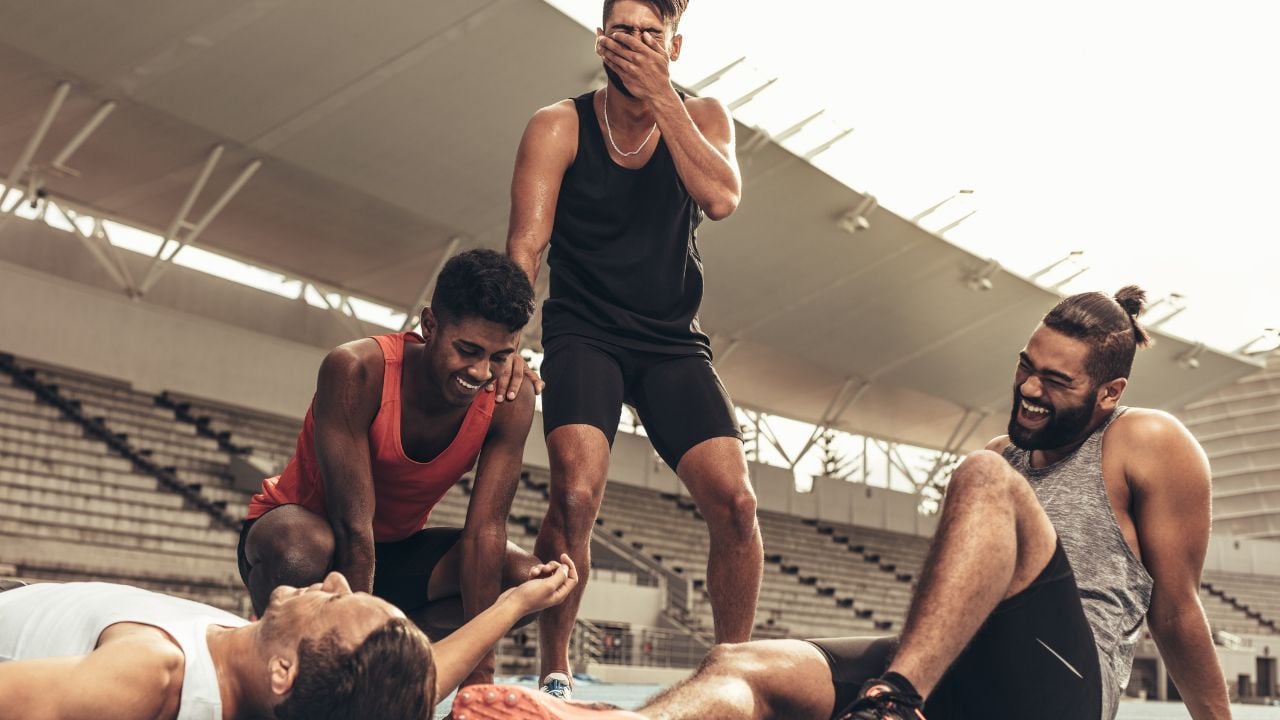
- Why Post-Workout Recovery Matters
- Biological Process of Muscle Repair and Growth
- Nutrition for Optimal Recovery
- 1. Proteins for Muscle Repair
- 2. Carbohydrates For Energy Replenishment
- 3. Fats To Reduce Inflammation and Balance Hormone
- 5. Eat Balance Diet
- Lifestyle and Habits To Boast Recovery
- 6. Sleep: The Foundation of Recovery
- 7. Listening to Your Body
- 8. Avoid Overtraining
- Active Muscle Recovery Techniques
- 9. Stretching To Improve Workouts and Reduce Pain
- 10. Foam Rolling: The Self-Massage Technique
- 11. Light Activity
- Advanced Muscle Recovery Methods
- 12. Massage Therapy: The Key to Pain Relief and Reduced Stress
- 13. Contrast Baths: The Secret to Faster Recovery
- 14. Cold Water Immersion Therapy
- 15. Compression Garments
- Best Supplements for Muscle Recovery
- 16. Protein Supplement
- 17. Creatine Monohydrate
- 18. BCAA
- Conclusion
- References
Why Post-Workout Recovery Matters
Muscle recovery is not simply a rest period; it’s an active biological process where the body repairs and strengthens itself.
Muscle Recovery is the post-exercise period when the body begins to repair the micro-tears in muscle fibers caused by intense physical activity.
This process is essential because it allows the muscles to heal stronger than they were before, which is the basis of muscle growth and increased strength.
Recovery after exercising is super important. It helps your muscles grow, reduces soreness, and improves your performance.
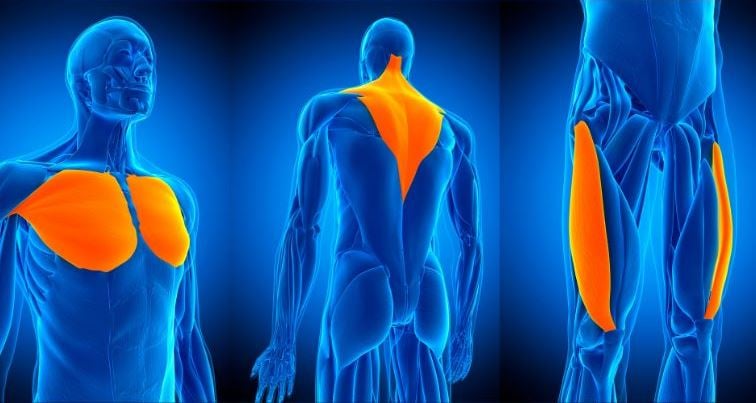
Biological Process of Muscle Repair and Growth
After a workout, the body initiates a series of biological responses and cellular processes to repair muscle fibers and replenish energy stores.
Here’s what happens:
- Muscle Protein Synthesis (MPS): Exercise causes small-scale damage to muscle fibers, which the body repairs through MPS. This process uses amino acids (from proteins) to rebuild and strengthen muscle tissue.
- Restoring Energy Stores: Muscles use glycogen (stored glucose) for energy during exercise. Post-workout, the body replenishes these glycogen stores through the carbohydrates consumed in the diet.
- Mitigating Inflammation: Exercise-induced muscle damage triggers an inflammatory response, which, paradoxically, is both a part of the problem and a part of the recovery solution. This inflammation signals the body to start healing, but excessive inflammation can lead to prolonged muscle soreness and delayed recovery.
- Hormonal Adaptations: Hormones like insulin, growth hormone, and testosterone play roles in signaling muscle repair and growth.
- Neural Adaptations: Neural adaptations also occur, enhancing the body’s ability to recruit muscle fibers during subsequent exercise sessions.
Nutrition for Optimal Recovery
After training, your diet can affect your body’s ability to repair damaged muscle fibers and synthesize new proteins. Eat a balanced diet to get all the nutrients you need to recover well.
1. Proteins for Muscle Repair
Exercising, especially during weight lifting or high-intensity training, creates microscopic tears in your muscle fibers.
Muscle Protein Synthesis (MPS) is the process your body uses to repair and rebuild muscle fibers that are damaged during exercise. Consuming enough protein provides amino acids that stimulate MPS, leading to recovery and muscle growth.
Leucine is one amino acid that is especially important for initiating MPS after a workout. Studies show that eating 20–40 grams of protein maximizes muscle growth.
Many experts recommend eating 0.14–0.23 grams of protein per pound of body weight within 1–2 hours after training for optimal recovery.
High-protein food sources include eggs, meat, fish, dairy, beans, nuts, and protein shakes.

2. Carbohydrates For Energy Replenishment
When you exercise, your body uses up the energy stored in your muscles and liver.
Therefore, after a workout, it is important to replenish these glycogen stores as quickly as possible. It helps your muscles recover, and you can return to exercising well again.
The best carbohydrates have a high glycemic index (GI). High-GI carbs are quickly digested and absorbed into the bloodstream. This means quickly replenishing your glycogen stores.
- White bread
- White rice
- Pasta
- Potatoes
- Bananas
- Grapes
- Honey
Note: Avoid too much high GI carb as it leads to a spike in blood sugar levels, followed by a crash.
You can then eat a larger meal within 2 hours of your workout that includes a mix of high-GI and low-GI carbohydrates.
Researchers recommend consuming 1.0 to 1.2 grams of carbohydrates per kilogram of body weight per hour to maximize muscle glycogen replenishment during a short recovery period.
3. Fats To Reduce Inflammation and Balance Hormone
In the context of post-workout recovery, fats may not receive as much attention as proteins and carbohydrates. However, healthy fat plays an equally important role during muscle recovery. Here is how it helps:
- Exercise triggers acute inflammation, which is part of the muscle repair process. Healthy fats contribute to the production of anti-inflammatory eicosanoids. And helps to modulate this inflammation.
- Fats are fundamental in synthesizing hormones such as testosterone and estrogen. It finally improves muscle mass and strength.
- Fats help absorb fat-soluble vitamins like A, D, E, and K. They have antioxidant properties and aid in reducing oxidative stress post-exercise.
- Omega-3 fatty acids, in particular, can support joint health by reducing inflammation.
A 2021 review found that men who followed low-fat diets had lower testosterone levels than those who followed higher-fat diets.
Unlike carbohydrates and proteins, there is less urgency in consuming fats immediately after a workout. Including a moderate amount of fats in your daily diet is important for long-term recovery and hormonal balance.
The Dietary Guidelines for Americans recommend that 20-35% of your daily calories should come from fat.
Best sources of healthy fats for your post-workout meals and snacks:
- Omega-3 fatty acids: Add grilled salmon or tuna to a salad or quinoa bowl. Top oatmeal or yogurt with flaxseeds or chia seeds.
- Monounsaturated fats: Drizzle olive oil on roasted vegetables or whole-wheat bread. Add avocado to sandwiches or wraps—snack on almonds or peanuts.
- MCTs: Add MCT oil to smoothies or coffee. Snack on coconut oil or coconut butter.
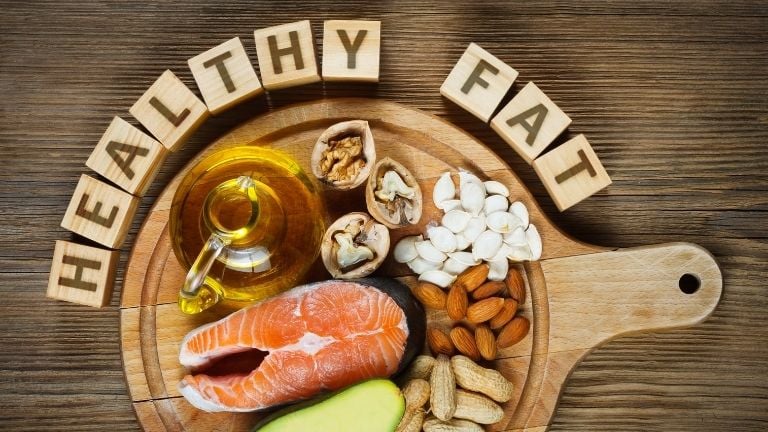
4. Unlock the Power of Hydration
When you exercise, you lose fluids and electrolytes through sweat. It is essential to replenish these fluids and electrolytes after a workout to help your muscles recover.
Hydration is essential for muscle recovery. When you exercise, you lose fluids and electrolytes through sweat. After a workout, it is important to replenish these fluids and electrolytes to help your muscles recover.
Dehydration can lead to many problems, including muscle fatigue, soreness, and cramps. It can also impair muscle function and recovery.
Here are some tips for staying hydrated:
- It’s important to begin a training session well-hydrated. Drink 200 to 300 ml of water 10 to 20 min before exercise.
- Consume 200 to 300 ml of fluid during the intense every 10 to 20 min.
- Post-activity hydration should aim to correct any fluid loss accumulated during the practice.
- If you are sweating heavily, you may also need to consume electrolytes like sodium and potassium. Electrolytes can be found in sports drinks and coconut water, or you can take electrolyte supplements.
5. Eat Balance Diet
Daily food choices lay the groundwork for how effectively your body can repair and rebuild after strenuous activity.
A well-rounded diet ensures that your body has access to all the essential nutrients it needs to prevent deficiencies that could hinder your muscle’s recovery capacity.
This is how you can follow it:
- Minimize Consumption of Ultra-Processed Foods. They are high in added sugars, unhealthy fats, and sodium while lacking essential nutrients. Overconsumption of these items can contribute to systemic inflammation.
- Eat plenty of fruits, vegetables, and whole grains for important vitamins, minerals, fiber, and phytonutrients.
- Balance your meals in terms of portions and include a diverse range of foods to cover the spectrum of nutrients your body requires.
- Eat regular meals and snacks throughout the day. This will help to keep your blood sugar levels stable and prevent muscle breakdown.
- Choose Complex Carbohydrates over refined carbs. Whole grains and starchy vegetables provide sustained energy and help replenish glycogen stores.
- Get enough total daily protein for muscle repair and growth. Aim for 1.4-1.8 grams of protein per kilogram of body weight.

Lifestyle and Habits To Boast Recovery
6. Sleep: The Foundation of Recovery
Rest and sleep are super important for your body to recover after exercising. Lack of sleep can slow muscle growth and increase injury risk.
Studies prove that sleep deprivation can impair muscle recovery by disrupting the body’s inflammatory response and hormone production, both of which are essential for muscle growth and repair.
A study found that sleep helps the body recover its physiological, psychological, musculoskeletal, immune, metabolic, and endocrine systems. These systems are all needed for the body to adapt to training stress.
Sleep also helps with memory and learning, so you can remember and use new skills you learn during training.
For athletes, it’s best to aim for 7–9 hours of sleep each night. This gives your body enough time to do all the necessary repairs.
To sleep better and recover well, you can do these things:
- Stick to a regular sleep schedule
- Have a calming bedtime routine
- Avoid screens before bed
- Make your sleep environment comfy

7. Listening to Your Body
It’s important to pay attention to your body after a workout. Every person is unique, and what works for one may not work for another.
You can improve your performance by listening to your bodys signals and adjusting your recovery methods.
Inadequate recovery can also slow your progress and hinder your results. Everyone has different recovery needs, influenced by age, fitness level, and overall health.
It’s important to pay attention to your body’s signs of tiredness, soreness, and discomfort. Adjust your training schedule and recovery methods as needed.
8. Avoid Overtraining
Overtraining happens when you push your body too hard without giving it enough time to recover. It can lead to poor performance, a higher risk of injuries, and feeling burnt out.
Overtraining can lead to persistent fatigue, low motivation, frequent illnesses or injuries, trouble sleeping, and decreased performance.
If you notice these signs, taking a step back, reviewing your training routine, and prioritizing rest and recovery is vital.

Active Muscle Recovery Techniques
Active recovery means doing easy exercises to increase blood flow and help your muscles recover. You can stretch, light jog, swim, or bike ride.
These activities eliminate waste, carry nutrients to your muscles, and reduce soreness. Just remember to keep these exercises gentle to avoid hurting your muscles.
Try these methods and see which ones work best for you.
9. Stretching To Improve Workouts and Reduce Pain
Stretching is an effective way to enhance flexibility, reduce muscle tension, and promote relaxation.
Try dynamic stretches like leg swings before your workout to warm up and static stretches afterward to cool down and improve flexibility.
I always warm up for 5–10 minutes before and stretch for a few minutes after my workouts. This helps me a lot.
How to improve your recovery by adding stretching.
- Increases muscle blood flow: Improved circulation delivers oxygen and nutrients to repair damaged muscle fibers.
- Flushes out lactic acid: Stretching helps remove lactic acid and other waste products that build up in muscles during exercise.
- Reduces muscle soreness: Gentle stretching helps reduce next-day stiffness and DOMS (delayed onset muscle soreness).
- Improves mobility and flexibility: Stretching maintains or improves your range of motion and joint health.
- Promotes relaxation: The slow, sustained stretches signal your body to relax after the stress of exercise.
Current scientific evidence does not strongly support the effectiveness of stretching for athletic recovery. However, light training followed by pain-free stretching could be more beneficial for active recovery than taking a complete rest day.

10. Foam Rolling: The Self-Massage Technique
A study published in the International Journal of Sports Physical Therapy found that foam rolling significantly reduced muscle soreness in participants.
Foam rolling is a self-massage technique that uses a foam roller to apply pressure to specific body areas.
Foam rolling is helpful for athletes or people who do regular physical activity because it can help them recover and prevent injuries. But anyone can benefit from foam rolling, no matter how fit or active they are.
It is like releasing knots in your muscles, which speeds up your recovery and makes you feel less achy. It eases muscle tension, makes you more flexible, and increases blood flow.
I have found that foam rolling 2–3 times a week has helped my muscles recover faster between workout sessions.

Know More: Foam Roller Benefits: When And How To Use, Tips
11. Light Activity
The key to active recovery is finding an activity that’s low-intensity and keeps your heart rate at 30-60% of your maximum heart rate.
Research suggests that active recovery enhances muscle repair and reduces next-day soreness compared to complete rest. It is, therefore, important to take an easy spin, lap swim, or jog after heavy-weight training or sprints.
Low-impact activities like swimming, biking, and jogging can help your muscles and joints recover after a hard workout.
Low-intensity steady movement improves blood flow and delivers nutrients to repair damaged tissues and eliminate inflammatory metabolic waste. It also prevents the accumulation of lactic acid and other byproducts in the muscles.
Advanced Muscle Recovery Methods
Optimizing muscle recovery means using techniques to help muscles relax, improve circulation, and reduce swelling. You can include these methods in your post-workout routine to feel better and perform well:
12. Massage Therapy: The Key to Pain Relief and Reduced Stress
Getting a massage is an excellent way to help your body recover faster and maximize your workout results. Massage therapy eases soreness and stiffness by boosting muscle circulation and blood flow.
Increased blood flow brings fresh oxygen and nutrients to repair damaged muscle tissue. Massage also helps to relax tight muscles and address muscle imbalances or restrictions that can hinder recovery.
Studies show regular massage reduces inflammation and helps rebuild muscle tissue. Many experts recommend a full-body therapeutic massage within 24 hours after an intense workout for optimal effects.
Even a 15-30 minute targeted massage 1–2 times a week can help.

13. Contrast Baths: The Secret to Faster Recovery
Contrast baths, also called contrast water therapy, involve alternating hot and cold water immersions.
Athletes use this therapy to accelerate recovery after intense training sessions or competitions.
The theory behind contrast baths is that the hot water helps dilate blood vessels, increasing blood flow, while the cold water constricts them, which can reduce inflammation and muscle soreness.
Typically, you would soak the affected muscles in hot water around 38-40 °C (100-104 °F)) for 3–4 minutes, then switch to cold water around 10-15 °C (50-59 °F) for 1–2 minutes. Repeat this cycle 2–3 times.
Just 10–15 minutes post-workout can speed recovery by reducing soreness and swelling.
The hot water helps increase blood flow to deliver nutrients and remove waste, while also reducing stiffness and soreness. The cold water constricts blood vessels and reduces inflammation and swelling.
The alternating temperatures provide a “pump and dump” effect to flush metabolic buildup from the tissues. Contrast baths also help mentally unwind after strenuous activity.
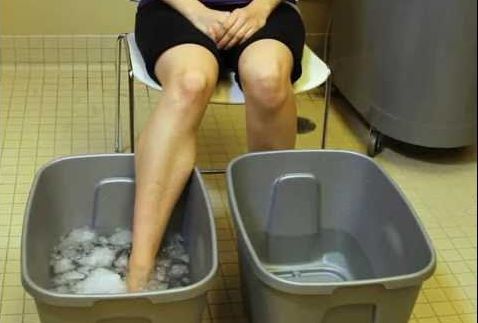
14. Cold Water Immersion Therapy
Cold water immersion (CWI), also known as an ice bath or cold plunge, is a recovery technique that involves immersing the body, or a part of it, in cold water. The water temperature for CWI is typically between 10-15 °C (50-59 °F).
CWI therapy works by increasing blood flow to the muscles and reducing inflammation. The cold water constricts the blood vessels, reducing blood flow to the muscles. When you exit the cold water, the blood vessels dilate, which increases blood flow to the muscles. This increased blood flow brings oxygen and nutrients to the muscle fibers and helps to remove waste products.
Research shows people who regularly use cold tubs or baths after intense training experience less DOMS (delayed onset muscle soreness).
The natural analgesic effect of cold therapy means less perceived pain the next day. Just 10–15 minutes of cold water immersion can help accelerate healing.
Cold immersion is my all-time favorite way to start my day, regardless of season. I do a 5-15 min of CWI before my morning bath. It makes me feel more energized and active throughout the day.

15. Compression Garments
Many athletes, from weekend warriors to professional sportspeople, often wear compression clothes because they help them get better.
Compression garments are tight, compressive forms of clothing, often made from elastin and nylon. These garments are designed to apply a certain amount of pressure to the body parts they cover.
Researchers found that compression garments can improve athletic performance after intense exercise and recommend that athletes wear compression tights immediately after a workout to reap the benefits.

Best Supplements for Muscle Recovery
16. Protein Supplement
Protein is easy to digest and absorb by the body, so it’s a good supplement for people who want to build muscle and recover quickly.
It contains all the essential amino acids the body needs for building and repairing muscle tissue and other important functions.
Whey protein powder is the most commonly used supplement for workout recovery. This is likely because whey provides all the essential amino acids necessary for muscle repair and growth. A typical scoop of whey protein has 25 grams of protein, but some products have more.
Many of you have decided not to use whey protein because you feel bloated, are lactose intolerant, or are following a vegan diet. For you, plant protein powders can be an easy way to increase your protein intake.
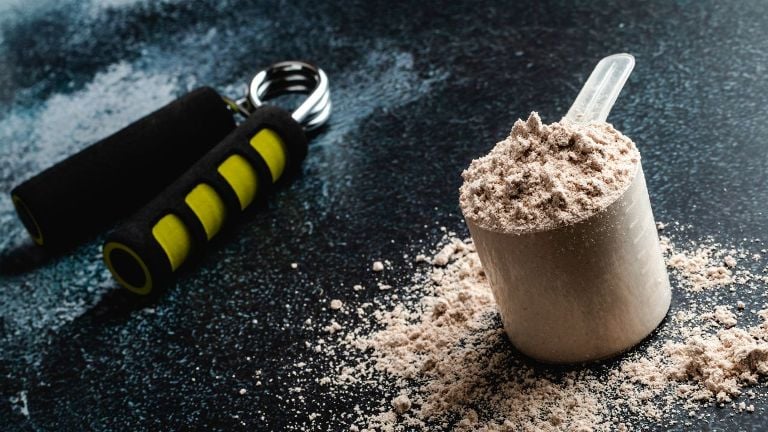
17. Creatine Monohydrate
Creatine monohydrate is a popular sports supplement that has been shown to improve athletic performance and recovery.
It provides energy to cells, particularly muscle cells, during high-intensity, short-duration activities like weightlifting or sprinting.
Creatine can also be obtained through diet, primarily from animal products such as red meat and fish, and the body also produces it.
Studies have shown that it increases muscle strength, size, and endurance and improves exercise performance.
18. BCAA
BCAA stands for Branched-Chain Amino Acids, a group of essential amino acids the body cannot produce on its own. It is necessary to obtain it through diet or supplements. The three BCAAs are leucine, isoleucine, and valine.
Studies show BCAA supplements boost post-workout recovery. They are consuming 5.6 grams of BCAAs after resistance exercise, which increases muscle protein synthesis by 22% versus placebo. The essential amino is effectively utilized for muscle repair and growth when taken immediately pre- or post-workout.
A standard dosage is 3–5 grams of BCAAs within an hour before or after your workout. Look for a supplement with a 2:1:1 ratio of leucine, isoleucine, and valine—pair BCAAs with protein for optimal muscle recovery between workouts.
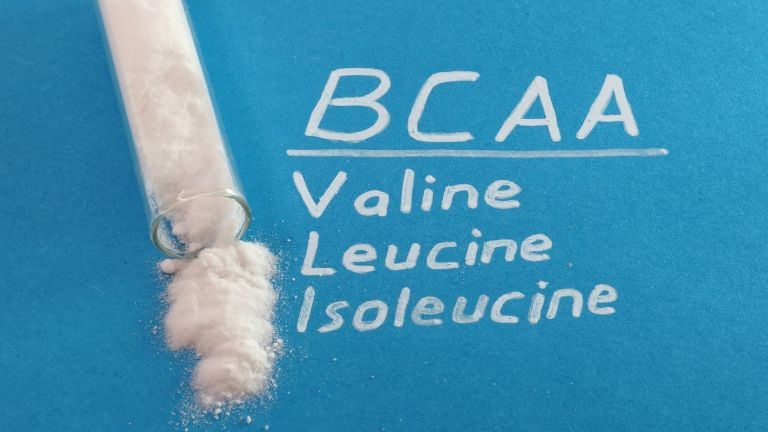
Conclusion
Recovery is just as important as the workout itself.
Prioritize rest, nutrition, hydration, and listening to your body’s needs to optimize recovery. It repairs muscles, replenishes energy, and strengthens the immune system.
By following the tips above, you can help your body recover faster and get back to working out sooner.
Please share with others and sign up for our newsletter for more tips on fitness and nutrition. Together, let’s achieve our fitness goals through optimal recovery.
References
- Judge, L. W., Bellar, D. M., Popp, J. K., Craig, B. W., Schoeff, M. A., Hoover, D. L., Fox, B., Kistler, B. M., & Al-Nawaiseh, A. M. (2021). Hydration to Maximize Performance and Recovery: Knowledge, Attitudes, and Behaviors Among Collegiate Track and Field Throwers. Journal of Human Kinetics, 79, 111-122.
- Dupuy, O., Douzi, W., Theurot, D., Bosquet, L., & Dugué, B. (2018). An Evidence-Based Approach for Choosing Post-exercise Recovery Techniques to Reduce Markers of Muscle Damage, Soreness, Fatigue, and Inflammation: A Systematic Review With Meta-Analysis. Frontiers in Physiology, 9. https://doi.org/10.3389/fphys.2018.00403.
- Imtiyaz S, et al. (2014). To compare the effect of vibration therapy and massage in prevention of delayed onset muscle soreness (DOMS).
- Lee S, Kimmerly DS. Influence of music on maximal self-paced running performance and passive post-exercise recovery rate. J Sports Med Phys Fitness. 2016 Jan-Feb;56(1-2):39-48. PMID: 27314136.
- Leidy HJ, et al. (2013). Beneficial effects of a higher-protein breakfast on the appetitive, hormonal, and neural signals controlling energy intake regulation in overweight/obese, “breakfast-skipping,” late-adolescent girls.
- Page, P. (2012). CURRENT CONCEPTS IN MUSCLE STRETCHING FOR EXERCISE AND REHABILITATION. International Journal of Sports Physical Therapy, 7(1), 109-119. https://www.ncbi.nlm.nih.gov/pmc/articles/PMC3273886/
- White, G. E., West, S. L., Caterini, J. E., Di Battista, A. P., Rhind, S. G., & Wells, G. D. (2020). Massage Therapy Modulates Inflammatory Mediators Following Sprint Exercise in Healthy Male Athletes. Journal of Functional Morphology and Kinesiology, 5(1). https://doi.org/10.3390/jfmk5010009
- Cintineo, H. P., Arent, M. A., Antonio, J., & Arent, S. M. (2018). Effects of Protein Supplementation on Performance and Recovery in Resistance and Endurance Training. Frontiers in Nutrition, 5. https://doi.org/10.3389/fnut.2018.00083

Manish is a NASM-certified fitness and nutrition coach with over 10 years of experience in weight lifting and fat loss fitness coaching. He specializes in gym-based training and has a lot of knowledge about exercise, lifting technique, biomechanics, and more.
Through “Fit Life Regime,” he generously shares the insights he’s gained over a decade in the field. His goal is to equip others with the knowledge to start their own fitness journey.
